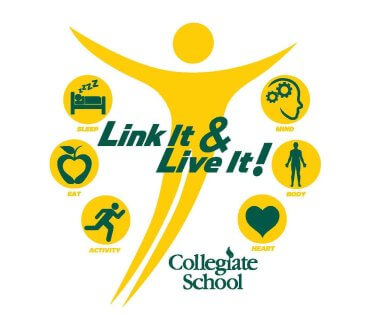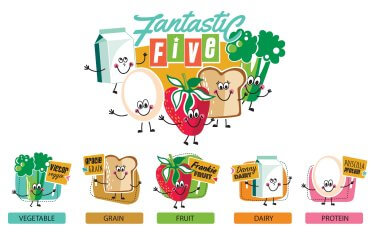Why and how should physical education and health teachers reach beyond class time and units to become change-makers to create a healthier school community?
We know that children attend school during the most formative years of their lives. These are the years when habits and preferences develop that often continue into adult life. Therefore, schools are a perfect place for teachers, as well as students, to impact future behaviors. Unfortunately, despite our best efforts, three-week nutrition or fitness units are too short to make long-lasting differences. To make 50 Million Strong a reality, we need to integrate health and wellness into our school communities throughout the year.

In 2008, Collegiate School in Richmond, Virginia, started its Link It & Live It wellness program to inspire and empower students, employees and parents to make healthful choices. Link It & Live It provides opportunities, activities and events for the school community to take ownership for present and future wellness throughout the year. The program focuses on the link between sleep, healthful eating and physical activity, and how together they impact the heart, brain and body.
Collegiate utilizes student wellness teams and ambassadors at each division — Lower, Middle and Upper School — to help assess school wellness, as well as to create assembly skits, contests, recess tournaments and promotional posters throughout the year.
Collegiate has never forced the wellness initiative; the school began taking baby steps of encouragement, waiting for the community to embrace the concept. The program has evolved and currently Collegiate follows the Whole School, Whole Community, Whole Child Model (WSCC) developed by the Centers for Disease Control and Prevention and the ASCD. The approach also includes the CDC’s expansive drug prevention programs. SHAPE America (2016) released a Position Statement in support of this model as a framework for ensuring that students are healthy and successful academically.
The following is one example of how Collegiate has used the WSCCmodel to make its wellness initiative relevant to students of all ages. Collegiate worked with its food service provider to develop a comprehensive program that incorporates the principles of nutrition education into the Lower School classroom curriculum while simultaneously providing opportunities for students to experience a variety of foods with additional choices and sampling in the cafeteria.

The program, called the “Fantastic Five,” features superhero characters — Victor Veggie, Gracie Grain, Frankie Fruit, Danny Dairy and Priscilla Protein. These characters bring healthy eating to life in a fun and engaging way, making the lunch room a teaching platform for developing lifelong habits. Each month, the program focuses on a different superhero and teachers incorporate information about that featured food into their classrooms. Student members of the Lower School Link It & Live It program perform skits for their peers during assemblies. The cafeteria also features decorations, food samples and recipe cards for students to take home. The Fantastic Five involves students, teachers, cafeteria staff and parents, who help to create a wellness-minded community linked to nutrition education.

Collegiate has a robust voluntary employee wellness program that encourages our teachers and staff to focus on their personal well-being, while role modeling healthy behavior for our students. Employees utilize an online wellness portal to participate in fitness challenges and change health behaviors. Plus, we have an annual Wellness Fair, a monthly newsletter and Lunch & Learns, that combine a health-related topic during teacher Professional Day lunches.

When your teaching colleagues and school staff come to you with ideas and want help getting them started instead of asking you to start it, you know a program has become a movement. These individuals have embraced the concept and want to be active leaders in the movement, too. For example, Collegiate’s 1st Grade teachers purchased balance ball chairs to sit on in their classrooms, plus they started a morning running club for their students. Lower school teachers asked for a couple of sets of pedometers they could take turns using with their students to track daily exercise and connect to math lessons. And one of our juniors, a trained Zumba instructor, asked to start an after-school class. We now have 20-35 students and teachers participating twice a week.
Our program started with one idea in 2008 and has grown into a school-wide initiative and one of our strategic pillars. One of the most powerful outcomes has been the positive energy that is helping to make us a stronger community.
If you want to embrace the vision of 50 Million Strong in your school or district, I encourage you to be a change-maker. Simply start with one activity or event to begin a wellness movement that will create a healthier community in your school. You will be surprised at how quickly others will want to participate and support your vision.
(Read more about Collegiate School’s wellness program in the 2017 Wellness Case Study on the SHAPE America website)
References
Using the Whole School, Whole Community, Whole Child Model to Ensure Student Health and Academic Success. Retrieved from https://www.shapeamerica.org//advocacy/positionstatements/health/upload/Using-the-Whole-School-Whole-Community-Whole-Child-Model-to-Ensure-Student-Health-and-Success.pdf
